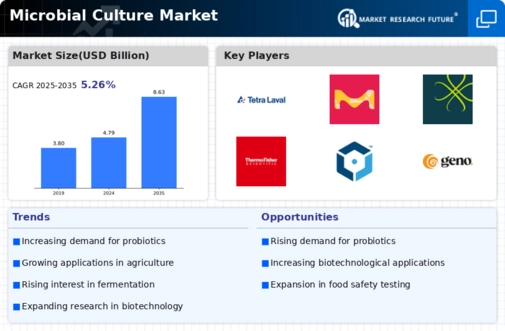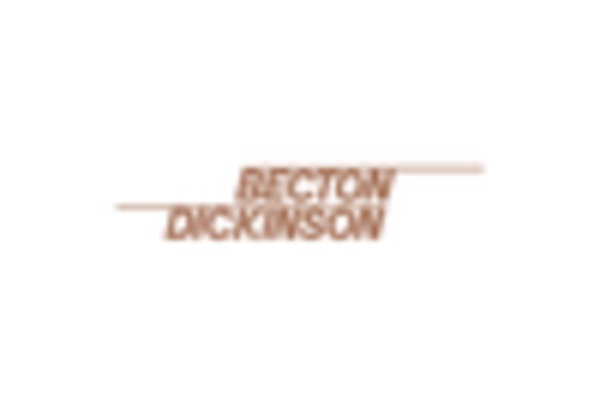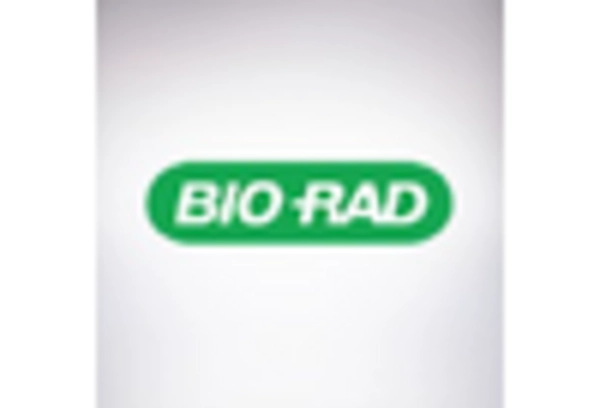Growing Demand for Biopesticides
The Microbial Culture Market is also benefiting from the increasing demand for biopesticides, which are derived from natural organisms. As agricultural practices shift towards more sustainable methods, the use of microbial cultures in biopesticides is becoming more prevalent. This trend is driven by the need to reduce chemical pesticide usage and promote environmentally friendly farming practices. The biopesticides market is expected to reach USD 6 billion by 2025, indicating a robust growth trajectory. Consequently, the Microbial Culture Market is likely to expand as more agricultural stakeholders seek effective microbial solutions to enhance crop protection and yield.
Rising Interest in Fermented Foods
The Microbial Culture Market is witnessing a significant rise in consumer interest in fermented foods, which are recognized for their health benefits. Products such as yogurt, kefir, and kimchi are gaining popularity due to their probiotic content, which is believed to support gut health. According to market analysis, the fermented foods segment is expected to grow at a compound annual growth rate of 8% through 2025. This trend is encouraging food manufacturers to incorporate microbial cultures into their products, thereby expanding the Microbial Culture Market. As consumers become more health-conscious, the demand for these cultures is anticipated to increase, further propelling market growth.
Increasing Applications in Biotechnology
The Microbial Culture Market is experiencing a notable surge in applications across various sectors, particularly in biotechnology. The utilization of microbial cultures in the production of enzymes, biofuels, and pharmaceuticals is expanding. For instance, microbial cultures are essential in the fermentation processes that yield antibiotics and other therapeutic agents. This trend is supported by the increasing investment in biotechnological research and development, which is projected to reach USD 700 billion by 2025. As industries seek innovative solutions to enhance productivity and sustainability, the demand for microbial cultures is likely to grow, thereby driving the Microbial Culture Market forward.
Expansion of Research in Microbial Ecology
The Microbial Culture Market is experiencing growth due to the expansion of research in microbial ecology. Scientists are increasingly recognizing the importance of microbial communities in various ecosystems, including soil health and human microbiomes. This research is leading to the discovery of new microbial strains with potential applications in medicine, agriculture, and environmental management. Funding for microbial ecology research is on the rise, with government and private sectors investing heavily in this field. As new microbial cultures are identified and characterized, the Microbial Culture Market is expected to benefit from the commercialization of these findings, driving further innovation and market expansion.
Advancements in Microbial Culture Technologies
Technological advancements in microbial culture techniques are significantly influencing the Microbial Culture Market. Innovations such as high-throughput screening and automated culturing systems are enhancing the efficiency and scalability of microbial production. These advancements allow for the rapid identification and cultivation of beneficial microorganisms, which is crucial for various applications, including pharmaceuticals and agriculture. The market for microbial culture technologies is projected to grow substantially, with estimates suggesting a value of USD 5 billion by 2026. As these technologies continue to evolve, they are likely to attract more investments, thereby fostering growth within the Microbial Culture Market.

















Leave a Comment